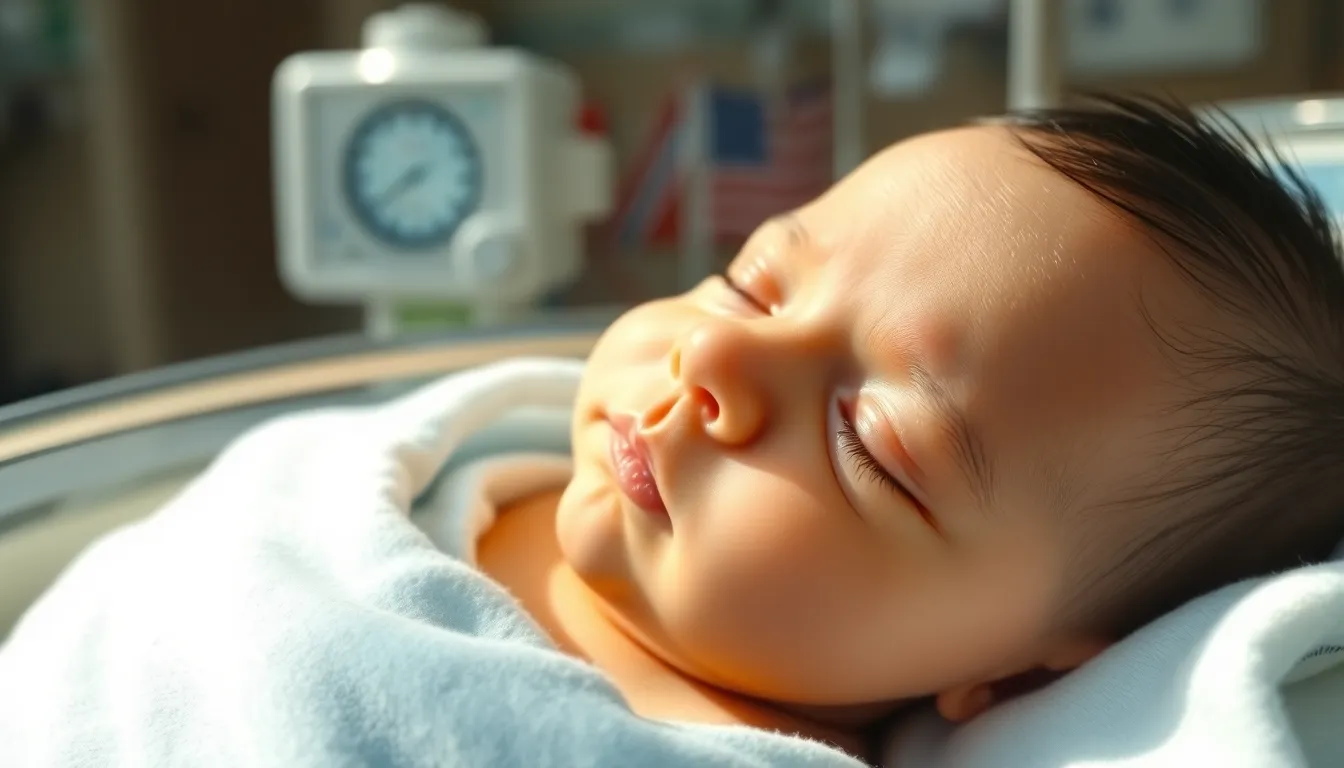When a newborn turns a shade of yellow that rivals a ripe banana, parents might wonder if they’ve accidentally welcomed a tiny fruit into their lives. But fear not! Jaundice in newborns is more common than you think and usually harmless. It’s just the body’s quirky way of adjusting to life outside the womb.
Table of Contents
ToggleUnderstanding Jaundice in Newborns
Jaundice in newborns presents as a yellowing of the skin and eyes. It’s important for parents to recognize that this condition typically occurs within the first week of life.
What Is Jaundice?
Jaundice results from elevated levels of bilirubin in the bloodstream. Bilirubin, a yellow substance, forms when red blood cells break down. In many newborns, this happens because their livers are still maturing. Regular monitoring usually indicates a benign process that resolves without treatment in most cases.
Types of Jaundice in Newborns
Newborns experience different types of jaundice, each with distinct causes. Physiologic jaundice, the most common type, arises due to the natural breakdown of red blood cells and liver immaturity. Breastfeeding jaundice occurs in infants who may not receive sufficient milk; this type often resolves as feeding increases. Pathologic jaundice indicates an underlying medical issue, like hemolytic disease, and requires prompt medical attention.
Causes of Jaundice in Newborns

Jaundice in newborns can arise from several factors, predominantly linked to bilirubin levels in the bloodstream.
Physiological Jaundice
Physiological jaundice is the most common form. This type typically appears within the first few days after birth. An immature liver struggles to process bilirubin effectively, leading to elevated levels. Most infants with physiological jaundice show improvement within one to two weeks. Effective feeding practices usually resolve excess bilirubin, allowing the condition to clear up naturally.
Pathological Jaundice
Pathological jaundice manifests within the first 24 hours after birth. This condition can indicate serious underlying health issues. Factors leading to pathological jaundice include blood group incompatibility, infections, or metabolic disorders. Immediate medical evaluation is crucial if jaundice appears early or if bilirubin levels rise rapidly. Treatments may involve phototherapy or exchange transfusions depending on severity and underlying causes.
Symptoms of Jaundice in Newborns
Newborns with jaundice exhibit distinct symptoms. Yellowing of the skin stands as the most noticeable sign. The eyes can also turn yellow, indicating elevated bilirubin levels. Parents often observe these color changes starting from the face and moving downward to the chest and abdomen.
Additionally, lethargy may be present in affected infants. These babies might become less responsive or show reduced alertness, which signals the need for monitoring. Poor feeding or decreased appetite also occurs, linked to the infant’s overall energy levels.
In some cases, dark urine signals the presence of high bilirubin. Stools may appear pale or clay-colored as another sign. If jaundice develops rapidly within the first 24 hours after birth, this situation requires immediate medical evaluation.
Routine checkups often monitor bilirubin levels. Healthcare providers typically conduct assessments within the first few days of life to catch any concerning symptoms early. If jaundice develops gradually, lasting more than two weeks, it might warrant further investigation as well.
Parents should note any symptoms that seem unusual for their newborn. Consistent observation ensures timely responses to potential complications. When these symptoms arise in combination, they’re a clear indicator that further evaluation by a healthcare professional is necessary.
Diagnosis and Treatment
Diagnosis of jaundice in newborns involves visual assessments and blood tests to measure bilirubin levels. Pediatricians often examine skin color in various lighting, confirming jaundice by observing yellowing beginning from the face and progressing downward. If jaundice appears within the first 24 hours of life, medical evaluation becomes crucial to rule out serious conditions. Blood tests provide quantitative bilirubin levels, which guide healthcare providers in determining the severity and needed intervention.
Treatment options for newborn jaundice vary based on the underlying cause and bilirubin levels. Phototherapy stands as the most common treatment, where specialized lights help reduce bilirubin levels by converting it into a form excretable via urine. For severe cases, exchange transfusions may take place, replacing a portion of the baby’s blood to decrease bilirubin levels significantly. Ensuring adequate feeding can also support bilirubin elimination, emphasizing the importance of breastfeeding or formula feeding in managing jaundice.
Prevention and Management
Preventing jaundice in newborns involves several proactive measures. Ensuring adequate breastfeeding within the first hour of life helps stimulate milk production, which assists in bilirubin elimination. Monitoring weight loss remains crucial, as excessive loss can indicate insufficient feeding.
Parents should also recognize the signs of jaundice early. Observing the color of the baby’s skin and eyes helps detect jaundice promptly. Immediate evaluation occurs if jaundice appears within the first 24 hours of life, as it may signal serious conditions.
Physiologic jaundice typically resolves without treatment, but monitoring bilirubin levels is essential. Regular pediatric check-ups allow healthcare providers to assess the infant’s progress. If bilirubin levels become concerning, phototherapy may be initiated. This treatment uses light to help break down excess bilirubin in the blood.
For cases indicating possible underlying medical issues, further testing and interventions are necessary. Exchange transfusions serve as a treatment option in severe cases, effectively lowering bilirubin levels.
Following discharged from the hospital, parents should maintain vigilance. Observing unusual symptoms and ensuring the baby feeds frequently contribute to better management outcomes. Keeping an open line of communication with healthcare professionals empowers parents to address concerns swiftly.
Consistently following these practices can lead to healthy development in newborns with jaundice. The combined efforts of proper feeding and vigilant monitoring help manage bilirubin levels effectively.
Jaundice in newborns is a common condition that often resolves without intervention. Parents should remain aware of the signs and symptoms while ensuring their baby receives adequate feeding. Regular pediatric check-ups play a vital role in monitoring bilirubin levels and ensuring the baby’s health. If jaundice appears within the first 24 hours or worsens, seeking immediate medical attention is crucial. By staying vigilant and informed, parents can support their newborn’s healthy development and address any concerns promptly.




